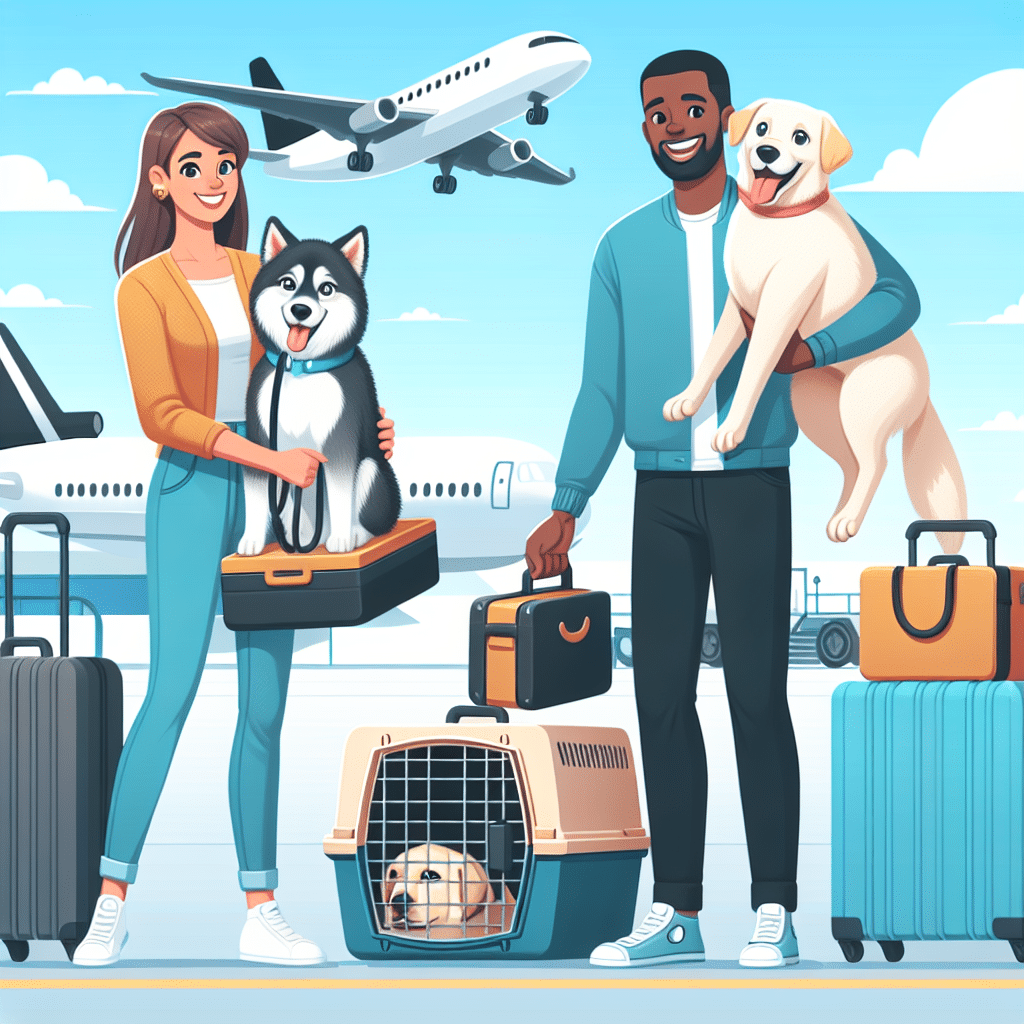Ultimate Guide to Flying with Dogs
Understanding Airline Policies
Before booking a flight, it is crucial to understand each airline’s specific policies concerning traveling with dogs. Most airlines categorize pets as either carry-on (in cabin) or checked pets (cargo). Airlines such as Delta, American Airlines, and Southwest have unique guidelines affecting breed restrictions, kennel requirements, and health certificates. Some airlines permit only specific breeds; for instance, snub-nosed breeds may face restrictions due to their potential breathing difficulties at high altitudes.
Make sure to check if your chosen airline limits the number of pets per flight, as you might need to reserve your spot well in advance.
Pre-Flight Preparations
Health Check and Documentation
Before flying with your dog, schedule an appointment with your veterinarian. Ensure your dog is healthy enough for travel and discuss any concerns related to altitude pressure changes. Most airlines require a health certificate issued by a vet within a certain time frame (usually 10 days) before travel. This certificate should confirm that your dog is free from infectious diseases and includes vaccination records.
Choosing the Right Carrier
Select an appropriate carrier that fits the airline’s requirements. Soft-sided carriers are typically more comfortable and flexible for cabin travel. The dimensions should conform to the airline’s specifications—generally around 18 x 11 x 11 inches for in-cabin pets. Ensure the carrier is well-ventilated and securely constructed. It should allow your dog to stand, turn, and lie down comfortably.
Remember that some dogs might require training to adapt to the carrier, so start this process well before your travel date.
When to Fly
Consider flying during off-peak hours or non-holiday periods, which often mean less crowded flights. Early morning or late evening flights can be advisable, particularly in warmer climates, as it’s generally cooler at these times.
Arriving at the Airport
Check-In
Upon arrival at the airport, check in early. Airlines often require you to complete special paperwork for traveling with pets. Make sure you arrive at least 2-3 hours ahead of your flight. This will grant sufficient time to complete the check-in process smoothly without rushing.
Security Screening
When going through security, you will likely need to remove your dog from its carrier. Prepare for this by ensuring your dog is familiar with leash walking. Carry your dog through the metal detector while placing the carrier on the conveyor belt. Have your leash and poop bags readily available to manage any bathroom needs.
During the Flight
Tips for In-Cabin Travel
Before boarding, ensure your dog is calm. Familiar items such as their favorite toys or a blanket can help alleviate anxiety. You can also pack a portable water bottle with a nozzle for convenience during the flight.
If your dog tends to bark or is restless, consider seeking the advice of a veterinarian about calming medications. Nonetheless, never administer any sedatives without consultation.
Cargo Travel
If your dog is flying as baggage, the most critical aspect is ensuring that the cargo hold is temperature-controlled, as extreme conditions can be dangerous. Choose airlines known for good animal care. Avoid layovers if possible to minimize the time your dog will spend in transit.
Post-Arrival Considerations
Reuniting with Your Dog
Once you arrive at your destination, promptly check in at the designated area to collect your pet if they flew cargo. Monitor your dog’s behavior closely upon reuniting; they may exhibit stress or fatigue. A quiet space where they can rest after a long journey is essential.
Health Check at Your Destination
Conduct a quick health check on your dog after the flight. Look for signs of stress—panting, drooling, or lethargy. It may be useful to have a contact for a nearby veterinary clinic in case your dog exhibits any concerning symptoms or requires further care.
Special Considerations for Different Breeds
Small Breeds
Small breeds generally adapt well to cabin travel. Ensure your dog is accustomed to being in a crate and has enough space to move around. They might benefit from having a familiar blanket or cushion.
Large Breeds
Conversely, large breeds or those who are uncomfortable in tight quarters might be better suited for cargo travel. Ensure that they have a suitably sized kennel and consult your airline for specific weight limits and crate requirements.
Dealing with Anxiety
For pet owners concerned about their dog’s anxiety during flights, consider employing practices such as:
- Desensitization: Start by getting your dog used to their travel crate well in advance.
- Calming Products: Some owners find success with pheromone sprays, calming collars, or anxiety vests.
- Exercise: Prior to your travel, ensure your dog has sufficient exercise to help relieve pent-up energy.
Traveling Internationally
When flying internationally with your dog, additional documentation and regulations often apply. Research the destination country’s pet import laws, potential quarantine requirements, and vaccination protocols. Many areas also require specific rabies vaccinations, often administered at least 30 days prior to travel.
Rental Accommodations
If traveling away from home, ensure your accommodation is pet-friendly and inquire about additional fees or restrictions. Websites like Airbnb and BringFido can help find accommodations that welcome pets.
Final Tips
- Microchip: Consider microchipping your dog as a permanent form of identification.
- Emergency Contacts: Have the contact details of a local veterinarian handy at your destination.
- Hydration and Long-Lasting Treats: Stay hydrated and find long-lasting treats to keep your dog soothed during the flight.
By understanding and preparing for the rigors of air travel, you can ensure a positive experience for both you and your furry companion. Doing research, following airline guidelines, and planning ahead will make the journey enjoyable and stress-free.
